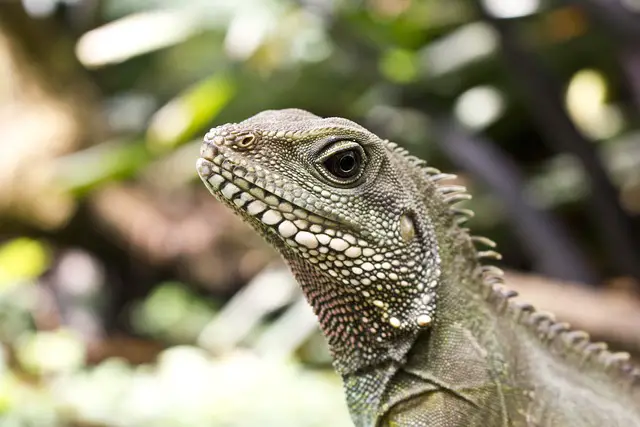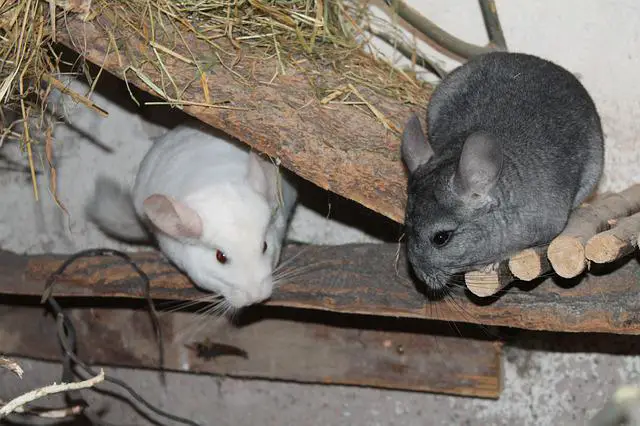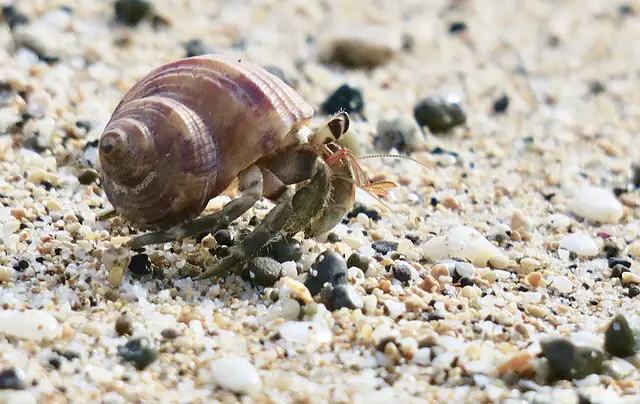Chinese water dragons and turtles are popular pets for reptile enthusiasts. Many people wonder if these two species can coexist in the same enclosure.
While it is not impossible for Chinese water dragons and turtles to live together, it is not recommended for several reasons.
Firstly, Chinese water dragons and turtles have different habitat requirements. Chinese water dragons are arboreal reptiles that require a lot of vertical space to climb and bask.
On the other hand, turtles are aquatic animals that need a large swimming area and a basking spot that is above water.
It isn’t easy to provide both requirements in the same enclosure without compromising the health and well-being of one or both species.
Secondly, Chinese water dragons and turtles have different dietary needs. Chinese water dragons are primarily insectivores and require a diet high in protein.
Turtles, on the other hand, are omnivores that require a diet that is high in calcium and fiber. Providing a balanced diet for both species in the same enclosure can be challenging, especially if they have different feeding schedules and preferences.
Chinese Water Dragons and Turtles: Can They Coexist?
Chinese water dragons and turtles are popular pets for reptile enthusiasts. Many wonder if these two species can live together in the same enclosure. The answer to this question is not straightforward, as it depends on several factors.
Firstly, Chinese water dragons are arboreal creatures, meaning they spend most of their time in trees. On the other hand, turtles are aquatic animals that need water to swim in.
Therefore, creating an enclosure that provides both species with their required habitat may be challenging.
Secondly, Chinese water dragons are known to be territorial animals. They can become aggressive towards other reptiles, including turtles, if they feel their space is invaded.
This behavior can lead to fights and injuries, which can be fatal to both animals.
Furthermore, turtles carry Salmonella, a bacteria that can cause human illness. Although Chinese water dragons are not susceptible to Salmonella, they can carry the bacteria on their skin.
Therefore, if a turtle and a Chinese water dragon share the same enclosure, there is a risk of cross-contamination.
In conclusion, keeping Chinese water dragons and turtles together in the same enclosure is not recommended.
While creating a suitable habitat for both species may be possible, the risk of territorial behavior and cross-contamination makes it a challenging and potentially dangerous situation.
Providing each animal with an enclosure that meets its specific needs is best.
Understanding Chinese Water Dragons
Habitat Requirements
Chinese water dragons are native to the forests and waterways of Southeast Asia. They require a warm and humid environment with access to water.
In captivity, a water dragon’s enclosure should be at least 6 feet long and 3 feet wide. The enclosure should have a basking area with a heat lamp to maintain a temperature of 85-90°F and a cooler area of 75-80°F.
The enclosure should also have a water source large enough for the water dragon to swim and soak in.
Dietary Needs
Chinese water dragons are omnivores, meaning they eat both plants and animals. They eat insects, small mammals, fish, and vegetation in the wild.
In captivity, their diet should consist of various insects, such as crickets, mealworms, waxworms, leafy greens, and fruits. It is essential to provide a calcium supplement to prevent metabolic bone disease.
Behavior Patterns
Chinese water dragons are active during the day and spend much time basking in the sun or swimming.
They are arboreal, meaning they spend most of their time in trees and need branches and other structures to climb in their enclosure.
Water dragons can become aggressive towards each other or other species if they feel threatened or if their territory is invaded.
Chinese water dragons require a specific environment and diet to thrive in captivity. Researching and understanding their needs before considering keeping them as pets is essential.
Understanding Turtles
Habitat Requirements
Turtles are aquatic animals that require a specific habitat to thrive. They need a large tank with clean water, a basking area, and a hiding place.
The water temperature should be between 75-85°F, and the basking area should be around 90°F. Turtles also need UVB light to help them absorb calcium and maintain strong bones.
Dietary Needs
Turtles are omnivores, which means they eat both plants and animals. They require a balanced diet that includes a variety of foods such as pellets, vegetables, fruits, and live or frozen prey. It’s essential to provide them with calcium and vitamin D supplements to prevent metabolic bone disease.
Behavior Patterns
Turtles are solitary creatures and can become aggressive toward each other if they feel threatened or overcrowded. They also require a lot of space to swim and bask.
Monitoring their behavior and ensuring they are not stressed or showing signs of illness is essential.
In summary, turtles require a specific habitat with clean water, a basking area, and a hiding place. They are omnivores and require a balanced diet with calcium and vitamin D supplements.
Turtles are also solitary creatures and require a lot of space to swim and bask.
Factors to Consider for Cohabitation
Several factors need to be considered when considering whether Chinese water dragons can live with turtles. These factors include space and territorial issues, dietary differences, and health risks.
Space and Territorial Issues
One of the most important factors is the space available for the Chinese water dragon and the turtle.
Chinese water dragons require a lot of space to move around and climb, while turtles need a large enough area to swim in.
Without enough space for both animals, they may become territorial and aggressive toward each other.
It is also essential to consider the type of enclosure used for cohabitation. Chinese water dragons need a warm and humid environment, while turtles require a dry and warm basking area.
The enclosure should be large enough to accommodate both animals’ needs and divided into separate areas to prevent territorial conflicts.
Dietary Differences
Another critical factor is the dietary differences between Chinese water dragons and turtles. Chinese water dragons are primarily insectivores, while turtles are omnivores and require a diet including plant and animal matter.
If the two animals are housed together, it is essential to ensure each animal gets the proper nutrition they need. This may require separate feeding areas or different types of food for each animal.
Health Risks
Finally, several health risks are associated with cohabitation between Chinese water dragons and turtles. Chinese water dragons can carry Salmonella, which can be transmitted to humans and other animals. Turtles are also known carriers of Salmonella.
In addition, turtles can carry parasites that can harm Chinese water dragons. It is essential to ensure that both animals are healthy and free from parasites or illnesses before being housed together.
Overall, cohabitation between Chinese water dragons and turtles can be successful if the proper precautions are taken. It is essential to consider both animals’ space and territorial needs, their dietary differences, and any health risks associated with cohabitation.
Expert Opinions
According to experts, Chinese water dragons and turtles should not be housed together. While both species can coexist peacefully in the same habitat, there are several reasons why it is not recommended.
Firstly, turtles are known to be carriers of Salmonella, a type of bacteria that can cause serious illness in humans.
While turtles are immune to bacteria, humans can become infected by contacting their feces or the water they swim in. On the other hand, Chinese water dragons are not known to carry Salmonella.
Secondly, Chinese water dragons require a warmer and more humid environment than most turtles. They also require a larger enclosure with plenty of climbing opportunities, while turtles prefer a more aquatic habitat.
Trying to create a habitat that meets the needs of both species can be challenging and may result in an unsuitable environment for one or both animals.
Finally, Chinese water dragons are known to be territorial and may become aggressive toward other animals in their habitat. This can lead to stress and injury for the water dragon and the turtle.
In summary, while Chinese water dragons and turtles can live together peacefully, it is not recommended due to their differing needs and potential health risks. It is best to house each species separately in an environment that meets their needs.
Conclusion
In conclusion, keeping Chinese water dragons and turtles together in the same enclosure is not recommended. While both species may be able to tolerate similar environmental conditions, they have different dietary and behavioral needs that can lead to conflicts and health issues.
Chinese water dragons are primarily insectivores and require a diet high in protein, while turtles are herbivores and need a diet rich in vegetables and fruits. Keeping them together may result in competition for food, with one species being overfed and the other underfed.
Additionally, Chinese water dragons are arboreal and require plenty of climbing space, while turtles are aquatic and need a swimming area. Housing them together may lead to stress and injuries, as they may fight for territory or resources.
Overall, it is best to provide separate enclosures for Chinese water dragons and turtles, each tailored to their specific needs. This will ensure both species’ health and well-being and prevent potential conflicts or issues.








